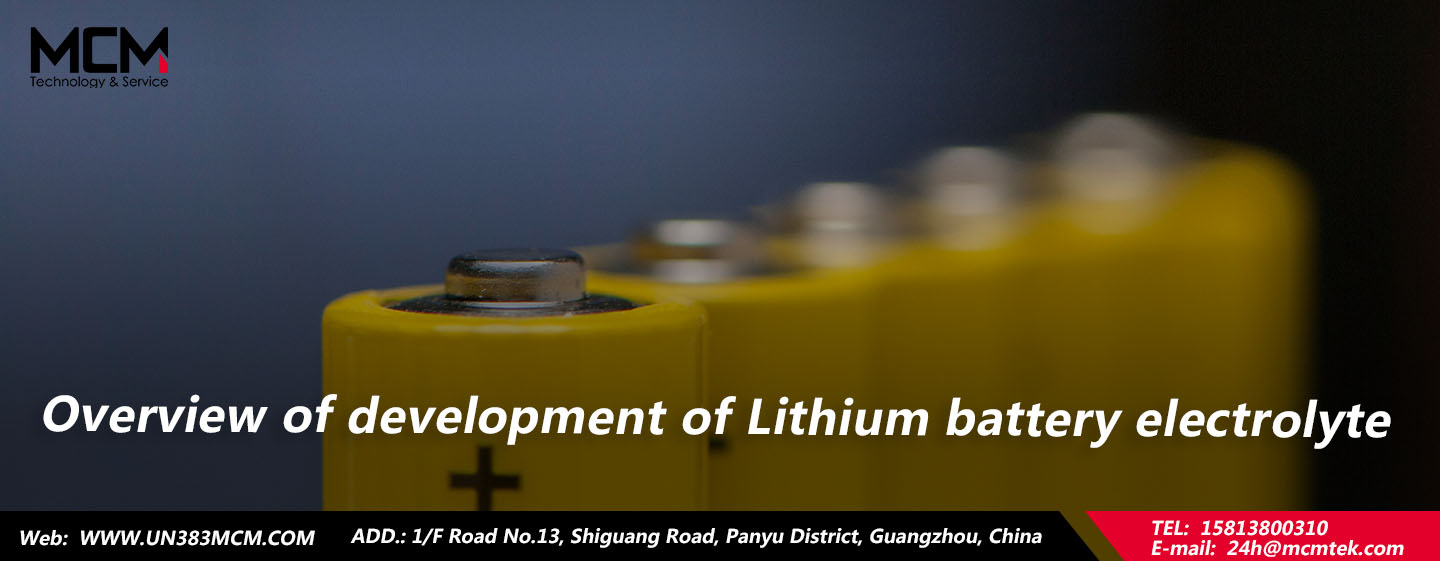Background
In 1800, the Italian physicist A. Volta built the voltaic pile, which opened the beginning of practical batteries and described for the first time the importance of electrolyte in electrochemical energy storage devices. The electrolyte can be seen as an electronically insulating and ion-conducting layer in the form of liquid or solid, inserted between the negative and positive electrodes. Currently, the most advanced electrolyte is made by dissolving the solid lithium salt (e.g. LiPF6) in non-aqueous organic carbonate solvent (e.g. EC and DMC). As per the general cell form and design, the electrolyte typically accounts for 8% to 15% of the cell weight. What’s more, its flammability and optimal operating temperature range of -10°C to 60°C greatly hinder further improvement of battery energy density and safety. Therefore, innovative electrolyte formulations are considered to be the key enabler for the development of the next generation of new batteries.
Researchers are also working to develop different electrolyte systems. For example, the use of fluorinated solvents that can achieve efficient lithium metal cycling, organic or inorganic solid electrolytes that are benefit to the vehicle industry and “solid state batteries” (SSB). The main reason is that if the solid electrolyte replaces the original liquid electrolyte and diaphragm, the safety, single energy density and life of the battery can be significantly improved. Next, we mainly summarize the research progress of solid electrolytes with different materials.
Inorganic solid electrolytes
Inorganic solid electrolytes have been used in commercial electrochemical energy storage devices, such as some high-temperature rechargeable batteries Na-S, Na-NiCl2 batteries and primary Li-I2 batteries. Back in 2019, Hitachi Zosen (Japan) demonstrated an all-solid-state pouch battery of 140 mAh to be used in space and tested on the International Space Station (ISS). This battery is composed of a sulfide electrolyte and other undisclosed battery components, being able to operate between -40°C and 100°C. In 2021 the company is introducing a higher capacity solid battery of 1,000 mAh. Hitachi Zosen sees the need for solid batteries for harsh environments such as space and industrial equipment operating in a typical environments. The company plans to double the battery capacity by 2025. But so far, there is no off-the-shelf all-solid-state battery product that can be used in electric vehicles.
Organic semi-solid and solid electrolytes
In the organic solid electrolyte category, France’s Bolloré has successfully commercialized a gel-type PVDF-HFP electrolyte and a gel-type PEO electrolyte. The company has also launched car-sharing pilot programs in North America, Europe and Asia to apply this battery technology to electric vehicles, but this polymer battery has never been widely adopted in passenger cars. One factor contributing to their poor commercial adoption is that they can only be used at relatively high temperatures (50°C to 80°C) and low voltage ranges. These batteries are now being used in commercial vehicles, such as some city buses. There are no cases of working with pure solid polymer electrolyte batteries at room temperature (i.e., around 25°C).
The semisolid category includes highly viscous electrolytes, such as salt-solvent mixtures, the electrolyte solution that has a salt concentration higher than the standard 1 mol/L, with concentrations or saturation points as high as 4 mol/L. A concern with concentrated electrolyte mixtures is the relatively high content of fluorinated salts, which also raises questions about the lithium content and environmental impact of such electrolytes. This is because the commercialization of a mature product requires a comprehensive life cycle analysis. And the raw materials for the prepared semi-solid electrolytes also need to be simple and readily available to be more easily integrated into electric vehicles.
Hybrid electrolytes
Hybrid electrolytes, also known as mixed electrolytes, can be modified based on aqueous/organic solvent hybrid electrolytes or by adding a non-aqueous liquid electrolyte solution to a solid electrolyte, considering the manufacturability and scalability of solid electrolytes and the requirements for stacking technology. However, such hybrid electrolytes are still in the research stage and there are no commercial examples.
Considerations for commercial development of electrolytes
The greatest advantages of solid electrolytes are high safety and long cycle life, but the following points should be carefully considered when evaluating alternative liquid or solid electrolytes:
- Manufacturing process and system design of solid electrolyte. Laboratory gauge batteries typically consist of solid electrolyte particles with several hundred microns thick, coated on one side of the electrodes. These small solid cells are not representative of the performance required for large cells (10 to 100Ah), as capacity of 10~100Ah is the minimum specification required for current power batteries.
- Solid electrolyte also replaces the role of the diaphragm. As its weight and thickness are mush greater than PP/PE diaphragm, it must be adjusted to achieve weight density ≥350Wh/kg and energy density ≥900Wh/L to avoid impeding its commercialization.
Battery is always a safety risk to some degree. Solid electrolytes, though it is safer than liquids, is not necessarily non-flammable. Some polymers and inorganic electrolytes can react with oxygen or water, producing heat and toxic gases that also pose a fire and explosion hazard. In addition to single cells, plastics, cases and pack materials can cause uncontrollable combustion. So ultimately, a holistic, system-level safety test is needed.
Post time: Jul-14-2023


